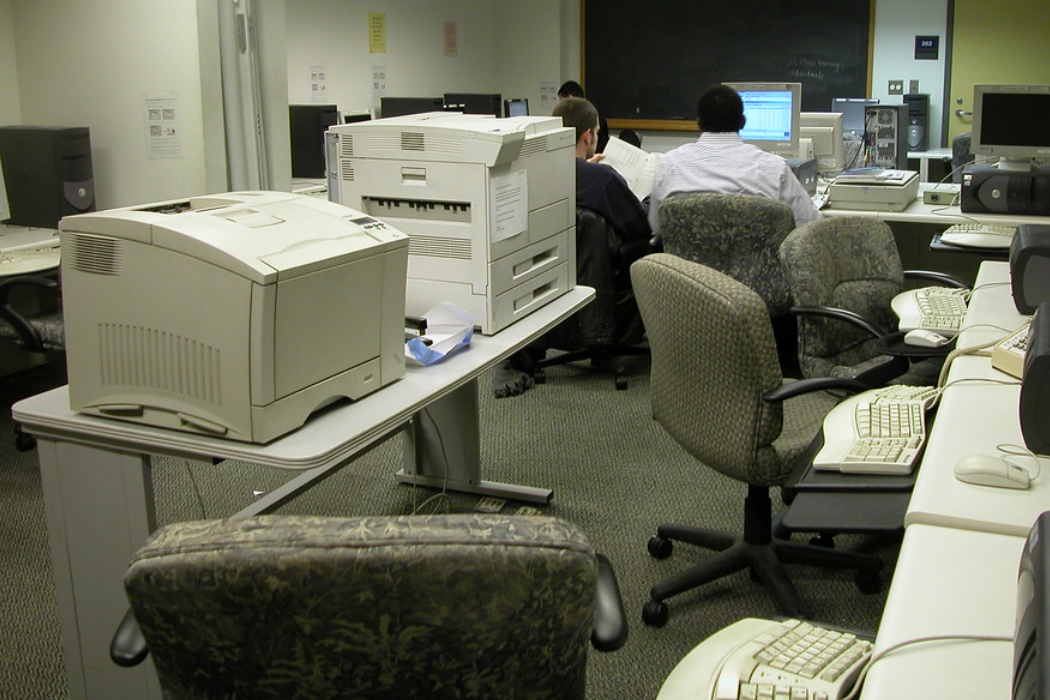Missouri State University| 2012
Academic Printer Procurement
Enterprise Printing Infrastructure Transformation

Context
As the technology landscape across our university evolved, we faced growing inefficiencies in managing diverse printing solutions across academic departments. Each department operated independently, resulting in a fragmented ecosystem of different printer models, inconsistent maintenance schedules, and escalating costs. I proposed using Student Computer Usage Fee (SCUF) funding to standardize and optimize the entire academic printing infrastructure.
Challenge
The decentralized approach to printer management was creating multiple pain points. Departments were paying premium prices for small-volume purchases of toner and supplies, maintenance costs were unpredictable due to varying printer models, and support staff were struggling to maintain expertise across multiple systems. We needed to transform this fragmented environment into a cohesive, efficient printing infrastructure while ensuring minimal disruption to academic operations.
Approach
I developed a comprehensive strategy that went beyond simple printer replacement. First, I led a thorough evaluation process to identify a printer model that would meet diverse academic needs while offering the best total cost of ownership. This involved analyzing usage patterns, maintenance requirements, and long-term supply costs across departments.
Working closely with stakeholders from multiple academic units, I designed a phased implementation plan that prioritized minimal disruption to academic activities. I established a centralized supply chain management system, implementing predictive maintenance protocols that included automated toner restocking at 20% capacity to prevent service interruptions.
To ensure sustainable success, I created standardized processes for supply distribution and maintenance, leveraging economies of scale while maintaining responsive support for individual department needs. This included developing clear communication channels and support protocols across all academic units.
Outcomes
The transformation delivered significant measurable benefits across multiple dimensions. We achieved a 30% reduction in per-page printing costs through volume purchasing agreements and standardized supplies. Maintenance costs decreased by 40% due to simplified support requirements and predictive maintenance protocols. Most importantly, printer downtime decreased by 80%, ensuring reliable printing services for students and faculty.
The new infrastructure provided additional benefits including improved environmental sustainability through better supply chain management and reduced waste from unused toner cartridges. The standardized system also enabled better tracking of usage patterns, providing valuable data for future resource allocation decisions.
Key Takeaways
Enterprise-wide standardization requires careful balance between efficiency goals and stakeholder needs to ensure successful adoption.
Predictive maintenance and supply chain optimization can deliver benefits beyond direct cost savings.
Centralized management of distributed resources can significantly improve service quality while reducing operational overhead.
Strategic approach to infrastructure transformation can turn a basic utility service into a source of significant organizational value.
Learn How To Do What I Do
Unlock your team’s full potential with my training course designed for leaders in software development. Whether you're a product manager, engineering manager, project manager, technical writer, marketer, or executive, I’ll provide you with the tools and strategies to significantly boost your team's productivity and effectiveness. Sign up today and start leading your team toward greater success and collaboration.
© Copyright 2025. Fieldway, LLC. All rights reserved.
